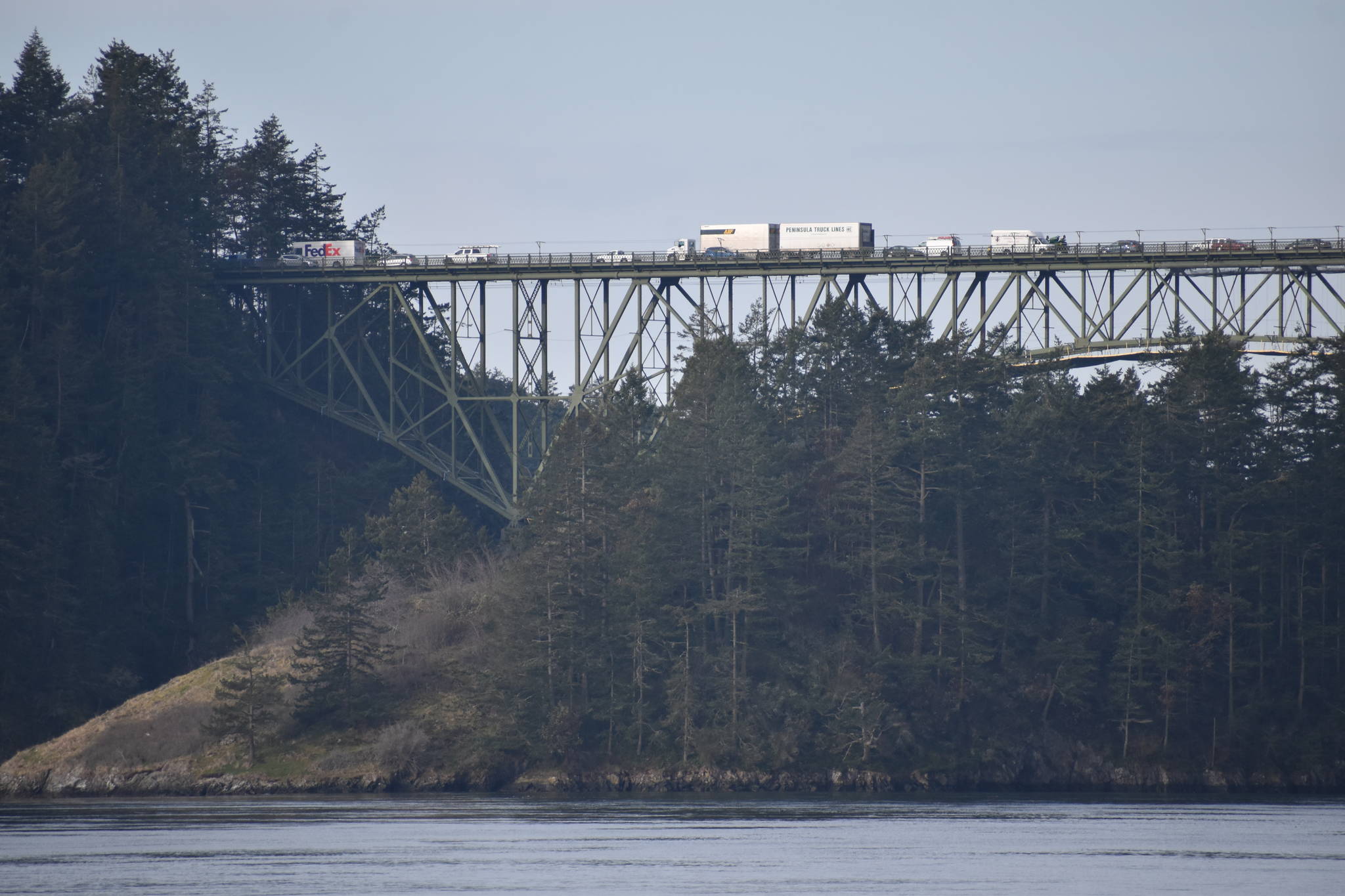Two recent deaths at the Deception Pass Bridge this month have renewed calls for barriers like fencing or netting to prevent future tragedies.
Witnesses saw a 60-year-old man from Oak Harbor jump off the bridge the night of July 1. A couple of weeks later, witnesses saw a 21-year-old woman from Kent jump off the bridge on July 17. Both were pronounced dead at the scene, according to Island County Coroner Robert Bishop. A LifeFlight helicopter was called to Cornet Bay after the young woman jumped, but she passed away.
The bridge is a known spot for suicides, and officials respond to several each year. Bishop said the two recorded this month were the first ones his office has responded to this year. The coroner responded to one suicide at the bridge in February last year. There may have been other incidents that officials do not know about.
The Skagit County Coroner responds during incidents when a person is recovered on the beach on the Skagit side. Skagit County does not keep data about suicides at specific locations, according to staff. The office does keep annual data about deaths it responds to in the county. In 2020, there were 21 suicides total, and one was due to a jump or fall. Data for this year listed 12 suicides, but none were due to a jump or fall as of Thursday afternoon.
Following the recent tragedies, people on social media and a letter to the editor writer asked for the installation of nets or some other type of barrier to prevent other people in crisis from jumping off the bridge. It’s an idea that’s been talked about for decades.
Although the bridge is listed on the National Register of Historic Places, Stephen Austin, a historian at the Washington Department of Transportation, said its designation would not prevent the installation of safety barriers.
“I cannot think of an instance in which we or the Washington State Historic Preservation Office (Department of Archaeology and Historic Preservation) would fight against suicide barriers,” he said, adding that the need for maintaining public safety would supersede historic preservation. Any barriers would need to go through a design process to ensure they fit with the look of the bridge.
Austin suggested funding is the issue, recalling how suicide barriers on the Aurora Avenue Bridge in Seattle cost more than $4 million.
A spokesperson for WSDOT said the agency does not have a funded program to install barriers at most of its bridges and that a project would likely need to go through the state Legislature.
The Deception Pass Bridge would need to go through an extensive evaluation process to ensure it would have the structural capacity to support a barrier.
There have been several suicide prevention efforts at the bridge over the years. A group placed rocks with inspirational messages on the bridge, although they later were removed because of the safety risk to boaters 180 feet below. A woman paid for an emergency phone that calls 911 on the west side of the bridge. It was installed in 2018 and can be used to alert rescuers of a crisis.
Anyone experiencing thoughts of suicide can call the National Suicide Prevention Lifeline at 1-800-273-8255.



